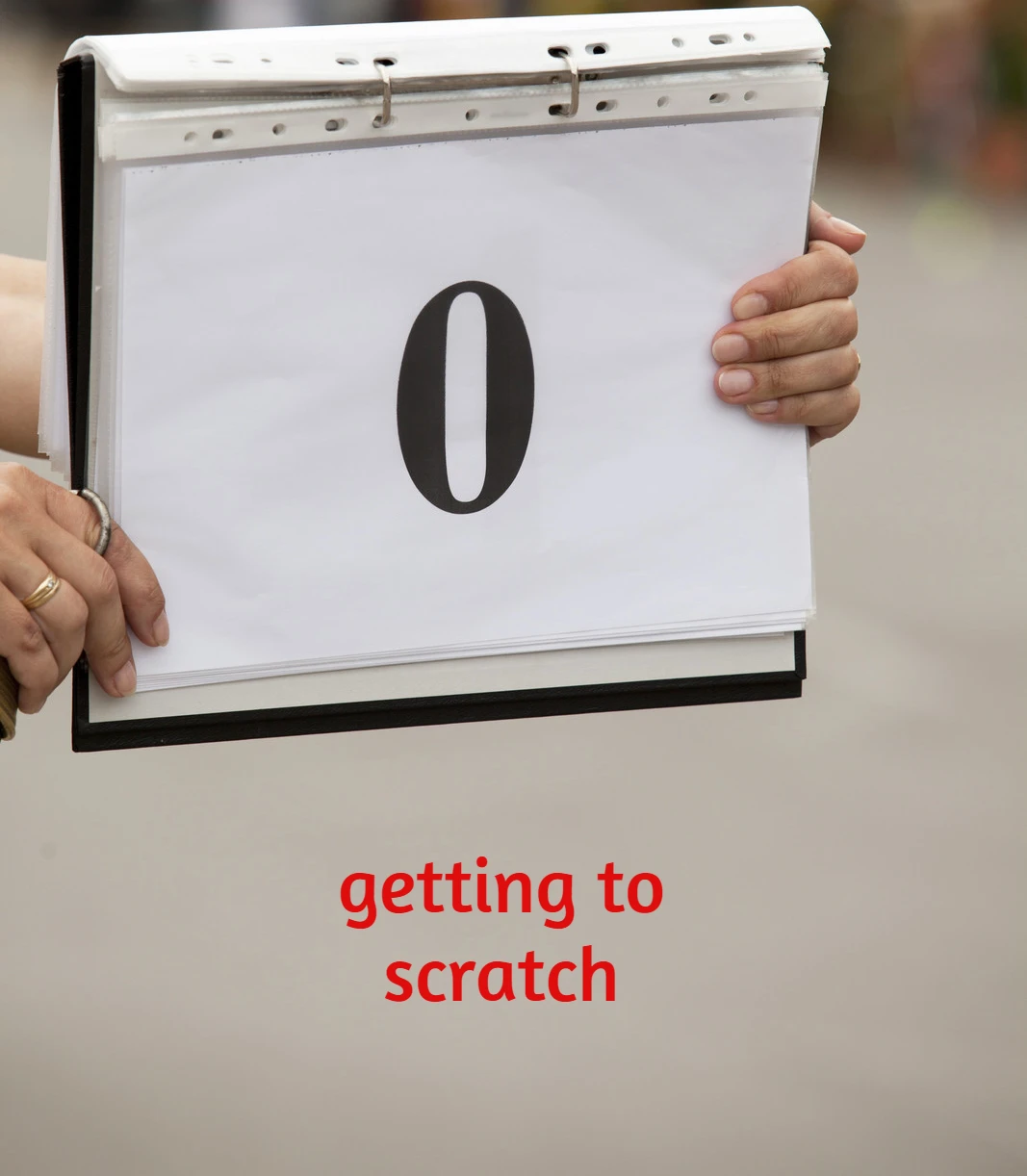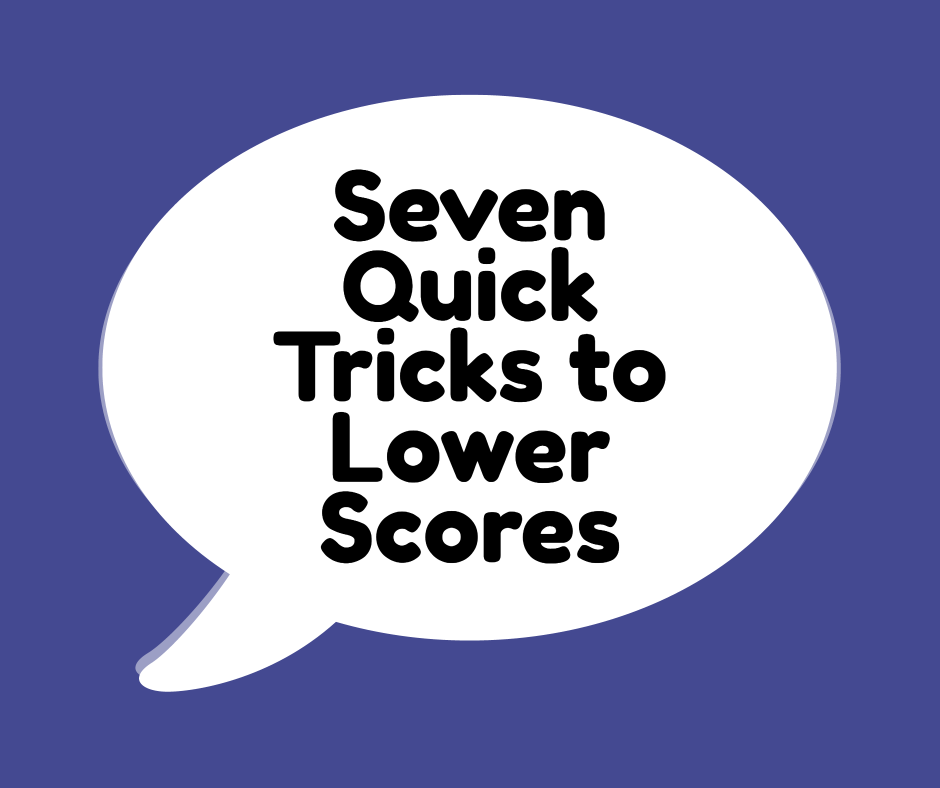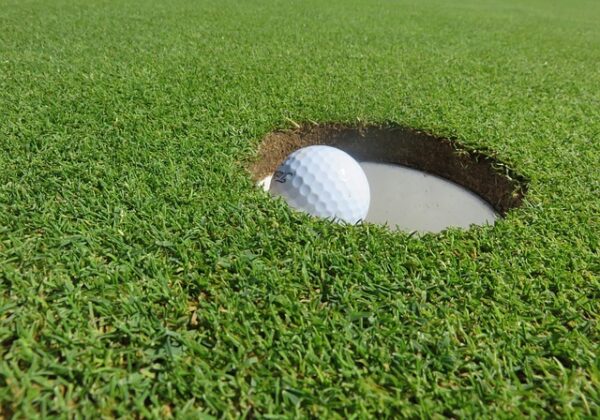The fastest way to improve quickly on the course is through intelligent practice. This is true for all parts of the game from tee to green. If you are looking for a few ideas to get better as you get closer to the flag stick, here are 5 short game drills you can try.
1) Consecutive Putts
The first drill isn’t particularly revolutionary and is actually quite unexciting but it does definitely work, especially if your putting stroke is less than solid like mine. I think I first read of something similar to this in an article about Tiger Woods but it has been a few years since then so don’t quote me on that. This is my version.
Basically, the aim is to hole as many consecutive putts as possible generally with the putts becoming harder progressively. There are different ways to do this, but the easiest is something like this. Place a first ball about a foot from the hole. Then place another ball about a foot further away and keep on going with a ball every foot or so, usually until about ten balls, but you could go further.
You step up to the first putt, hit it, then move on to the next. If you miss up a putt, you start again from the first. There are a few things to bear in mind here. Firstly, don’t hurry. This isn’t a speed challenge it is one to improve the putting stroke and make it super-consistent. Do everything you would normally do when you putt. Line it up, take a practice swing, step up and putt or however it works for you.
Progressively Longer Putts
Secondly, as the putts get longer, I usually set them on a slightly different line, not right behind one another. Depending on your putting stroke length, there is a good chance that you will hit the next ball in your backstroke if not.
To me, this develops something that is missing in my putting which is a sort of automatic, almost robotic, feel. If I hole all ten which is far from a given, it almost certainly won’t be on my first attempt. I will have hit 50 or more putts perhaps, all slightly different, and from inside ten feet.
Don’t get frustrated if you miss some. Remember, the aim isn’t necessarily to sink them all on the first run. It is be build an extremely reliable and repeatable putting routine and stroke.
2) Everything with a Seven
If you have read my article about playing 18 holes with a seven iron, you will know that I am both a fan of looking at things a little bit differently on the course and also a minimalist approach to golf. I have already written an article how a seven iron can be a real weapon when you are chipping and this takes it one step further.
It is similar to the previous drill in that you place about ten balls at various distances from the hole but obviously not on the green. For example, the first ball could be right on the edge on the fringe. The next ball will be a couple of yards further back and so on.
When I do this, the distance between the balls isn’t even. For example, the first might be only a metre or less off the edge, the second maybe three metres (ten feet) or so, then maybe double that. I then stretch out the gaps to the last ball which could be 50 metres from the green or maybe even 100 metres if you really want.
I start at the furthest ball for practical reasons. After I hit it, I can walk towards the next ball, the ball I have just hit and the flag without going back on myself. Unlike the putting drill, I am not aiming to hole these, although holing one of the closer ones is nice and does happen often enough. My aim is to try to get up and down. If I don’t get up and down, I don’t start again. By the time I come to hit the (hopefully) putt with my first ball, I have already hit my first shot with all the other balls and on a great day, I am looking at ten balls on the green near the hole and maybe even one or two already in the cup.
I keep score here so my aim is 20 shots or fewer with the ten balls. If I am doing this, it means on average I am getting up and down from everywhere with a seven. If you are wondering why I use a seven, it is because it is a forgotten shot for many golfers and this drill reminds me just how safe a shot it is as well as being fairly simply to play.
3) One Ball, Two Clubs
The third drill is both similar and also the complete opposite of the previous one. My aim is still to try to get up and down from every place I drop the ball. However, rather than always using a seven, I will attempt to use tow different clubs. In fact, I try to make these clubs as different as possible.
For example, I might drop a ball two yards off the green with the flag nowhere near the edge. I will then attempt a bump and run with a hybrid, getting the ball just over the fringe and running to the hole. Then with a second ball, I will pull out a sandwedge or lob wedge and try to fly the ball almost all the way to the hole or maybe deloft this wedge and fly it half-way and let it run.
This does a couple of things. First of all, it opens up the idea of imagination in the short game which is important. We can’t all be Seve, but simply playing it by the book is a limiting way to play the game. Just because you are in a certain position, it doesn’t mean that there is one choice of club.
Secondly, this is actually quite a lot of fun. I have tried bumping the ball out of a shallow bunker with a hybrid or used a chipper to smash it out of thick rough. Of course, a lot of times these shots won’t come off, but that is the point of practice after all.
Finally, this is really good for understanding your game. For example, I might say that it is better to use a lower-lofted club for chipping around the green. Maybe when you compare your lower-lofted club to a lob wedge, you realize that you feel far more comfortable with this lob wedge and your results are, on average, actually a lot better.
4) Line in the Bunker
This is an old one but is very good is you are struggling in the sand. You don’t even need a ball for this, at least at the start. This drill is all about teaching you to hit the sand when in the bunker. You draw two lines in the sand, about three to four inches apart. The front line represents where the ball would be.
Now simply play a full bunker shot, taking a good committed swing. The aim is to take a divot that covers both these lines. The bounce of the club should remove a good ‘sand divot’ of six inches or so that will fly the ball out of the bunker and onto the green on a cushion of sand.
This drill is actually quite an interesting one for other reasons too. For example, above I gave guidelines in terms of the distance between the two lines. However, depending on the sand conditions on your course (harder or softer) you might need to play with the distance, as well as how deeply you go into the sand.
For the same reasons, it is actually a good ting to do before playing on a course you don’t know. 5 or 6 swings in the bunker can let you see how you might need to slightly adjust things compared to where you normally play.
5) The One-Legged Pitch Shot
This is another classic, but has been around for a long time because it works. You simply hit pitch shots off your front foot. I mentioned doing this on full (or nearly full) swings recently in order to fight against swaying off the ball in the swing. In the short game, contact is absolutely key because slightly thin or fat will potentially be a disaster.
Standing one leg (the front one) isn’t as simple as it sounds. Balance can be a problem. If this is the case (and it is for me) just put the toe of your back foot on the ground without any weight on it.
Doing a swing like this keeps us on top of the ball and means that it is very easy to control the low point of the swing. The result is far more consistent contact which means we can really work on dialing in things like swing length and distance/direction control on these short game shots.





